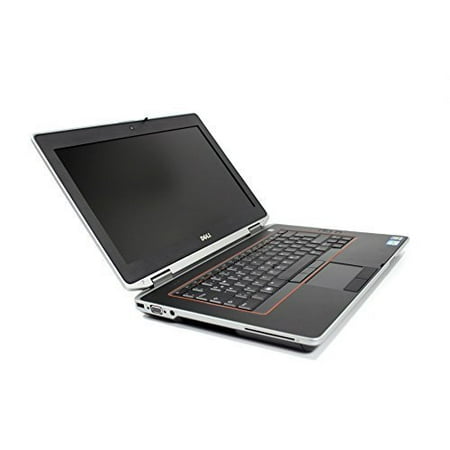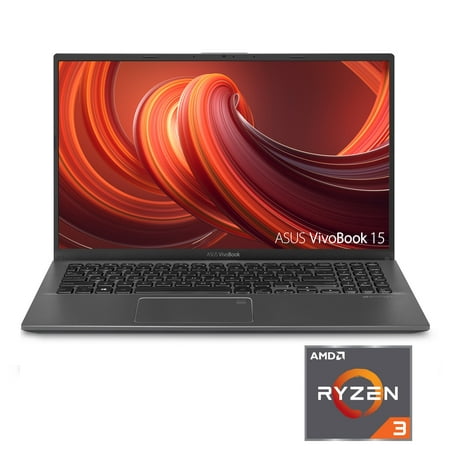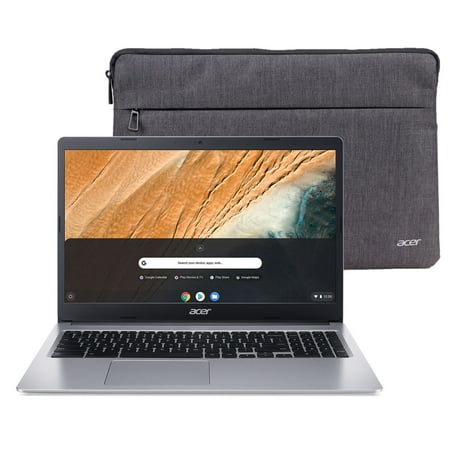ASUS 15.6″ 1080p Gaming Laptop, AMD Ryzen 7, 16 GB RAM, NVIDIA GeForce RTX 3050TI, 4 GB, 512 GB SSD, Windows 10, Gray, G513IE-PH74
Focused firepower streamlines and elevates the core Windows 10 gaming experience in the ROG Strix G15. With a powerful AMD Ryzen 7 4800H CPU and GeForce RTX 3050TI GPU, everything from gaming to multitasking is fast and fluid. Go full-throttle on esports speed with a competition-grade 300Hz/3ms display. Adaptive-Sync makes gameplay ultrasmooth, while advanced thermal upgrades help you stay cool under pressure. No matter what your game is, you can achieve your perfect play.
Focused firepower streamlines and elevates the core Windows 10 gaming experience in the ROG Strix G15. With a powerful AMD Ryzen 7 4800H CPU and GeForce RTX 3050TI GPU, everything from gaming to multitasking is fast and fluid. Go full-throttle on esports speed with a competition-grade 300Hz/3ms display. Adaptive-Sync makes gameplay ultrasmooth, while advanced thermal upgrades help you stay cool under pressure. No matter what your game is, you can achieve your perfect play.
- NVIDIA GeForce RTX 3050TI 4GB GDDR6 with ROG Boost up to 1795MHz at 80W 95W with Dynamic Boost
- AMD Ryzen 7 4800H Processor 8M Cache, up to 4.2 GHz
- 300Hz, 15.6″ Full HD 1920 1080 IPS-Type Display
- 16GB DDR4 RAM, 512GB PCIe NVMe SSD, Windows 11 Home
- ROG Intelligent Cooling thermal system with Thermal Grizzly Liquid Metal Thermal Compound
- ROG AURA Sync System with 4-zone RGB Keyboard, White Backlit logo and RGB Light Bar
- Wi-Fi 6 and Bluetooth 5.1
- Easy Upgrade Design
- Bundle Get 30 days of Xbox Game Pass for PC with purchase Active subscription required continues until cancelled game catalog varies over time.
Additional information
| Manufacturer Part Number | 90NR0582-M01970 |
|---|---|
| Model | G513IE-PH74 |
| Assembled Product Dimensions (L x W x H) | 13.90 x 10.20 x 1.10 Inches |






by Angel
I’ve only had this laptop for a few days, but so far, I love it. It runs great, the settings are easily customizable, and I haven’t had any issues. Games are running smoothly with brilliant graphics.
by Renato
Great laptop to work on graphic design, play games and also do 3D jobs with the great NVIDIA RTX 3070
by Karen
I just bought this laptop , I am just getting it set up but it will do everything I need. I like the way it looks.
by Mickey
The product I bought: ASUS ROG Strix G15, G513RM-WS74 CPU: Ryzen7 6800H GPU: GeForce RTX3060 Memory: 16GB DDR5 4800MHz RAM Storage: 1TB M.2 NVMe PCIe 4.0 SSD Display: 15.6″ WQHD (2560*1440), 165Hz, 3ms IPS-Type I did a lot of research and looked at many products. I almost purchased other laptop with the previous generation of CPU (Ryzen 7 5800H) and Memory (DDR4 3200Hz) with a bit cheaper price than this product. But I found this one. Considering this has the latest CPU (Ryzen 7 6800H) and DDR5 Memory, I couldn’t find any better deal than this with the price (1300-1400) at the time of the purchase (May, 2022). I am a developer. I installed Ubuntu 22.04 (dual boot with WIndows 11). It works fine. Highly recommend this product. (If you want linux OS, you would need to install one with the newer kernel version so that function keys can work properly.)
by Flumins
Everything is fine, everything works perfectly. I love how smooth is playing games. And the interface is very quickly.
by Steve
All the best Best ever ROG is the best ALL THE BEST I CANT reached windows 11 Why?